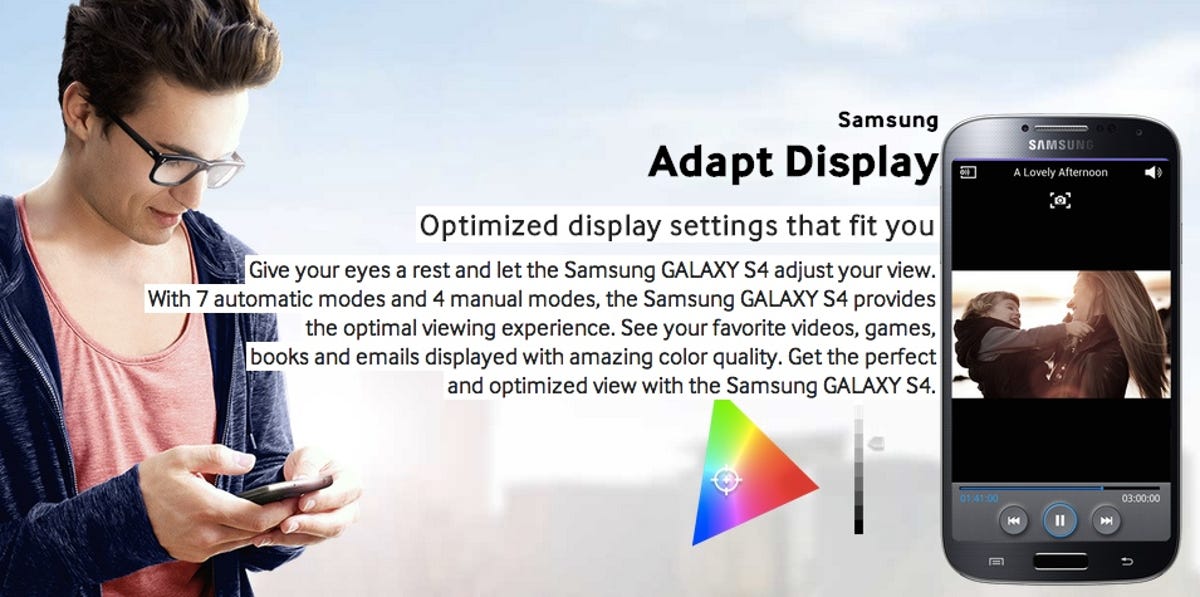Related stories
- Samsung Galaxy S4: Hands-on first take (with video)
- Hands-on photos: Samsung Galaxy S4
- Samsung unveils Galaxy S4
- Samsung Galaxy S4 vs. iPhone 5, HTC One, and BlackBerry Z10
- Full coverage: Samsung Galaxy S4 launch
If you’re the type of person who cares about these things, you’ll be happy to know that a screen expert gives the Samsung Galaxy S4 kudos so far.
In particular, Ray Soneira, president of display analysis and software calibration company DisplayMate, takes it as a good sign that Samsung includes something called a CIE Chromaticity Diagram and grayscale for the GS4’s adaptive screen settings.
The bottom line? If the Galaxy S4 has extensive color, white point, and display calibration adjustments, it means that Samsung’s phones can back away from the oversaturated, candied colors they often get due to the AMOLED screen technology. The varied spectrum indicates that whites could also look less blue than they have in the past, and more naturally pristine.
My colleague, CNET TV reviewer David Katzmaier, himself a screen fanatic, recently spent a lot of time playing with the settings on a Galaxy Note 2 and has some great insight of his own, including how to adjust settings to make colors more natural.


Samsung
It’s still the early days when it comes to actual display performance, both indoors and outdoors, and Samsung screens, like on the Galaxy S3, are often so reflective they’re hard to read outdoors. But good changes could be coming soon.
Note: CNET uses DisplayMate software in lab tests.



